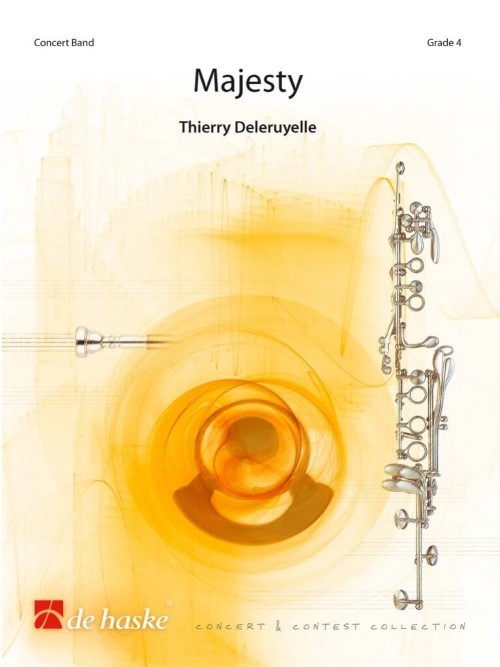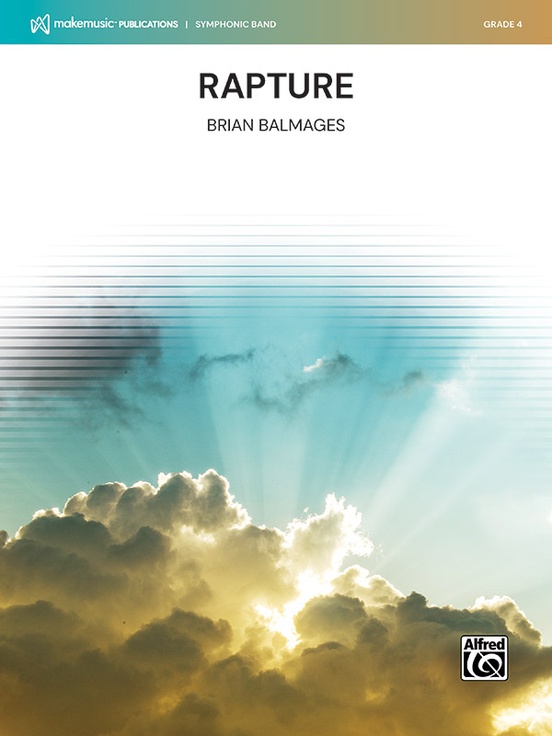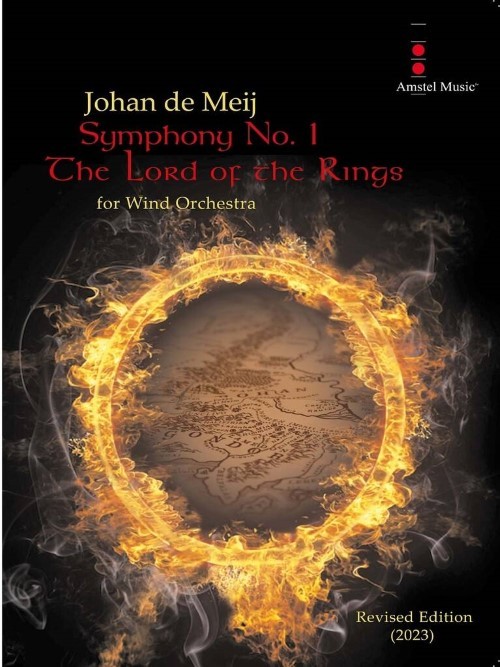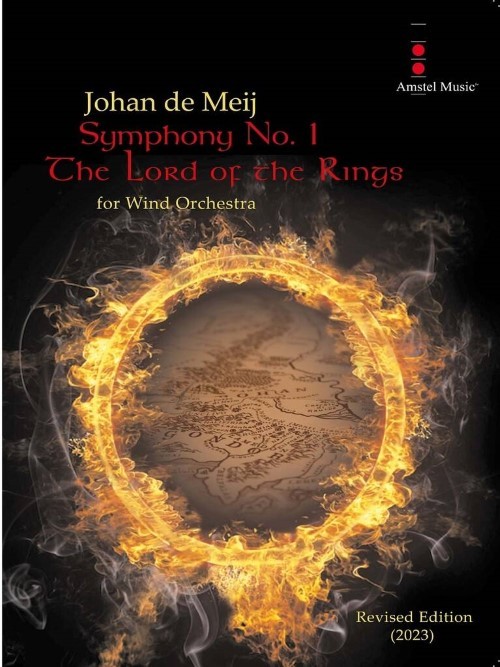Results
-
 £57.50
£57.50Alligator Alley - Michael Daugherty
(2003) Award-winning composer Michael Daugherty's first published work for young band describes a stretch of Interstate 75 that crosses through Florida's Everglades National Park. Alligator Alley celebrates this noble beast that has remained largely unchanged from prehistoric times. The first theme (Alligator's Theme) features the woodwinds (predominantly bassoons) while the second theme (Hunter's Theme) is performed by the brass. Program notes and staging suggestions are included in this marvelously descriptive work. Duration - ca. 4:30 Free interdisciplinary curriculum for the piece is available for download at BandQuest.org. Learn more on YouTube! BandQuest, an exciting series of new music and accompanying curricula for band, is a program published by the American Composers Forum. The series was started as a response to feedback from music educators that there is a pressing need for new, fresh band music. The heart of this program is new works written by a diverse group of leading American composers who have created challenging pieces that are a true departure from standard middle school repertoire. Every BandQuest project includes a residency component in which the composer works collaboratively with a middle school as they create their new piece. Many BandQuest pieces are accompanied by an interdisciplinary curriculum designed to assist students as they learn the music and to integrate each piece with non-music studies. Visit www.bandquest.org to learn more about this innovative series, and email [email protected] to request a free downloadable audio catalog.
Estimated dispatch 7-14 working days
-
 £204.99
£204.99Out to Sea and The Shark Cage Fugue (from Jaws) - John Williams
Referring to the 1975 blockbuster Jaws, director Steven Spielberg states that John Williams' music was clearly responsible for half the success of the movie. This suite features two of the signature musical sequences. In Out toSea, the trio of shark hunters led by police chief Martin Brody (played by Roy Scheider) heads into open water to find the menacing beast. This is followed by the Shark Cage Fugue, a classically inspired and sophisticatedaccompaniment to a tense underwater scene in which Hooper (portrayed by Richard Dreyfuss) comes face-to-face with the great white in an all-too-fragile suspended cage. Performance time - ca. 3:40
Estimated dispatch 7-14 working days
-
 £204.99
£204.99So Nata Per Te - Ferrer Ferran
So Nata Per Te -- or Naci para ti in Spanish -- translates as "I was born for you". This symphonic suite is inspired by Pepe Domingo, a great music enthusiast and lover of life who wanted to commemorate his long and happy marriage to his dear wife, Concha. He commissioned Ferrar Ferran to set to music the great bond of their partnership: the couple will be able to close their eyes and relive through the music their most precious memories one by one.So Nata Per Te is a suite of many contrasts. Its contemporary, modern flavours are entertaining while the colourful variations are exciting and fascinating. Audience members may recall happy memories in their ownlives listening to the delightful, famous tunes that appear throughout the work and, although somewhat different from the originals, they are easily recognisable.Ferrer Ferran dedicated this work to Pepe Domingo and his wife Concha not only for their great enthusiasm and passion for music, but also for their mutual love. So Nata Per Te was premiered on 27 February 2010 at the Auditorio Florida of Paiporta (Spain) by the Banda Primitiva de Paiporta, conducted by the composer.
Estimated dispatch 7-14 working days
-
 £184.99
£184.99Children'S March Over The Hills And Far Away - Percy Aldridge Grainger
Percy Grainger's extraordinary scoring skills permeate this classic, carefree work for symphonic band. Children's March: Over the Hills and Far Away, originally a piano solo, was orchestrated by the composer while he was a member of the U.S. Coast Guard Artillery Band. It includes two unusual scoring elements for the time - a prominent part for piano (cued in the winds), and brief four-part vocal interludes to be sung by members of the band (or a small chorus ad lib). Grainger believed that the greatest expressivity could be found in the lower instruments of the band (particularly the lower woodwinds), and Children's March includes a liberal and highly specialized use of the bassoons, English horn, bass clarinet and low saxophones. The march was first performed by the renowned Goldman Band in 1919, and was recorded in its original form by the same band with the composer conducting. (Full set includes a vocal score.)
Estimated dispatch 7-14 working days
-
 £57.50
£57.50Carrying You from "Laputa: Castle in the Sky" - Joe Hisaishi
New Sounds in Concert Band Series(NSB) for small band with 2-part choir Duration: approx.4'10" Arranged by Eiji Suzuki"Carrying You" was composed as a theme song to Castle in the Sky, an animated film produced by Studio Ghibli and directed by Hayao Miyazaki, released in 1986. The composer for Castle in the Sky was originally not Joe Hisaishi, but the director Miyazaki strongly requested him. The director told Hisaishi his vision for the film, and based on the world he imagined, Hisaishi made a collection of music called the Image Album. The melody that later becomes the basis for "Carrying You" was born from this album. However, the director Miyazaki was not planning on including a theme song in this film. Isao Takahata, the producer, proposed including a song, for the audience to think over the film at the end. He wanted the audience to think, "While the protagonists sought for the treasure, they didn't obtain any treasure. What did they obtain instead?" They thought, if they are going to create a theme song, it should be something organically connected with the entire film. Takahata requested the director Miyazaki to write the lyrics for the theme song. And to Hisaishi, he gave instructions to create a melody for the theme song using an instrumental piece called "Pazu and Sheeta" from the image album mentioned above. Director Miyazaki handed a piece of memo with lyrics to Takahata. "Carrying You" we hear now is this lyrics with some changes, set to Hisaishi's music. The melody is used at the opening of the film as well as the scene where Laputa is destroyed, and the song is used for the ending. Performance Advice from Arranger Suzuki: This is an extremely simple arrangement that can be performed by lower grade bands and singers. Of course, it can be played without singers and chorus, but the contents of the lyrics are very tasty so if possible, we recommend that you perform using the voices. Depending on your resources, the voice parts can be done as all solo, all female chorus, and so on.
Estimated dispatch 7-14 working days
-
 £94.99
£94.99Majesty (Concert Band - Score and Parts) - Deleruyelle, Thierry
Majesty is a powerful and spectacular overture. Right from the start, the brass open the work brilliantly before making way for a majestic hymn mostly played by the woodwind. The end of the piece repeats the opening fanfare as a monumental finale in the style of an American symphonic march. This work was commissioned by the Bourbourg Wind Orchestra (France), conducted by Claude Deconinck, on the occasion of its 230th anniversary. This piece was premiered by the commissioning orchestra on 19 November 2022, just two months after the death of Queen Elizabeth II. Naturally, this work is dedicated to her.Duration: 6.15
Estimated dispatch 7-14 working days
-
 £118.99
£118.99Cats (Songs from the musical) (Concert Band - Score and Parts) - Lloyd Webber, Andrew - De Meij, Johan
The musical Cats, with music by Andrew Lloyd Webber is based on the 1939 poetry collection Old Possum's Book of Practical Cats by T.S. Eliot. It became Lloyd Webber's third great success, after the musicals Jesus Christ Superstar and Evita. He began setting Eliot's poems to music in 1977, and the compositions were first presented as a song cycle in 1980. Producer Cameron Mackintosh then recruited director Trevor Nunn and choreographer Gillian Lynne to turn the songs into a complete musical. Cats became one of the longest-running shows in West End and Broadway history. It received its world premiere at the New London Theatre in 1981, where it played for 21 record-breaking years and almost 9,000 performances. The following year, Cats opened at New York's Winter Garden Theatre, its home for the next 18 years, garnering seven 1983 Tony Awards, including Best Musical. The show returned to Broadway in 2016, where it had a successful pre-tour run at the Neil Simon Theatre. Cats has been presented in over 30 countries, translated into 16 languages, and seen by more than 73 million people worldwide. Lloyd Webber's magnificent musical score includes the poignant hit song Memory, which has been recorded by over 150 artists, from Barbra Streisand to Liberace to Barry Manilow. It took 7,486 chandelier crashes for Lloyd Webber's The Phantom of the Opera to take over from Cats as the longest-running show in Broadway history in January 2006.Duration: 8.15
Estimated dispatch 7-14 working days
-
 £110.00
£110.00Rapture (Concert Band - Score and Parts) - Balmages, Brian
Make a powerful statement with this intense yet introspective work. The opening exclamation by percussion becomes a fixture throughout, supported by epic brass lines and energetic woodwind flourishes. Inspired by the hymn "Lo! He Comes with Clouds Descending", the music contrasts themes of pure joy and euphoria with intense reflection and peace. Covering the gamut of emotions, Rapture, by Brian Balmages, is as intense in its lyrical moments as in the height of its rapturous glory.Duration: 8.30
Estimated dispatch 7-14 working days
-
 £22.00
£22.00Symphony No.1: The Lord of the Rings (Concert Band - Study Score) - De Meij, Johan
Revised 2023 editionJohan de Meij's first symphony The Lord of the Rings is based on the trilogy of that name by J.R.R. Tolkien. This book has fascinated many millions of readers since its publication in 1955. The symphony consists of five separate movements, each illustrating a personage or an important episode from the book.The movements are:GANDALF (The Wizard)LOTHLORIEN (The Elvenwood)GOLLUM (Smeagol)JOURNEY IN THE DARK a. The Mines of Moria b. The Bridge of Khazad-DumHOBBITSThe symphony was written in the period between March 1984 and December 1987, and had its premiere in Brussels on 15th March 1988, performed by The Royal Band of the Belgian Guides under the baton of Norbert Nozy. In 1989, the Symphony The Lord of the Rings was awarded first prize in the Sudler International Composition Competition in Chicago. In 2001, the orchestral version was premiered by the Rotterdam Philharmonic Orchestra and was recorded by the London Symphony Orchestra.
Estimated dispatch 7-14 working days
-
 £499.00
£499.00Symphony No.1: The Lord of the Rings (Concert Band - Score and Parts) - De Meij, Johan
Revised 2023 editionJohan de Meij's first symphony The Lord of the Rings is based on the trilogy of that name by J.R.R. Tolkien. This book has fascinated many millions of readers since its publication in 1955. The symphony consists of five separate movements, each illustrating a personage or an important episode from the book.The movements are:GANDALF (The Wizard)LOTHLORIEN (The Elvenwood)GOLLUM (Smeagol)JOURNEY IN THE DARK a. The Mines of Moria b. The Bridge of Khazad-DumHOBBITSThe symphony was written in the period between March 1984 and December 1987, and had its premiere in Brussels on 15th March 1988, performed by The Royal Band of the Belgian Guides under the baton of Norbert Nozy. In 1989, the Symphony The Lord of the Rings was awarded first prize in the Sudler International Composition Competition in Chicago. In 2001, the orchestral version was premiered by the Rotterdam Philharmonic Orchestra and was recorded by the London Symphony Orchestra.
Estimated dispatch 7-14 working days
